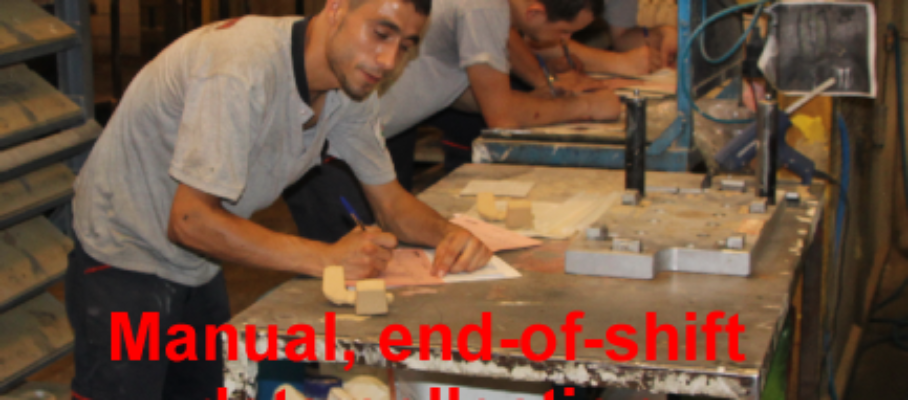Oct 27 2011
Waiting for each other
We have all seen the absurd situation in the featured picture above of a line of customers waiting for taxis while a line of taxis next to them is waiting for customers, with a barrier separating them. This particular instance is from The Hopeful Traveler blog. The cabs are from London, but the same scene could have been shot in many other major world cities.
I am sure we have all encountered similar situations in other circumstances, which may or may not be easy to resolve. One particular case where it should be easy is the restaurant buffet. Figure 1 shows a typical scene in buffet restaurants, with a line of people waiting to get food all on the one side of the table, while food is waiting and accessible on the opposite side.
Figure 1. A typical buffet
I think the fundamental mistake is the assumption that a buffet is like an assembly line, providing sequential access to dishes. This means that you cannot get to the Alo Gobi until the person in front of you is done with the Tandoori. The ideal buffet would instead provide random access, meaning that each customer would have immediate access to all dishes at all times. While it may not be feasible, you can get much closer to it than with the linear buffet. The following picture shows an alternative organization of a buffet in circular islands that is non-sequential. 
Figure 2. A buffet island at the Holiday Inn in Visalia, CA
The limitation of this concept is that replenishment by waiters can interfere with customers. To avoid this, you would want dishes to be replenished from inside the circle while customers help themselves on the outside, as in the following sketch:
Figure 3. A buffet island with replenishment from inside
One problem with the circular buffet island, however, is its lack of modularity. You can add or remove whole islands but you cannot expand or shrink an island, which you can if you use straight tables arranged in a U-shape, as in Figure 4.
 Figure 4. Buffet island with straight tables
Figure 4. Buffet island with straight tables
This buffet island may superficially look like a manufacturing cell, but it is radically different. Its purpose is random access to food as opposed to sequential processing of work pieces, and the materials do not flow around the cell but from the inside out.
Such are the thoughts going through my mind while munching on the Naan at Darbar.







Oct 28 2011
The staying power of bad metrics
A speaker I once heard on manufacturing metrics started with a quote from football coach Vince Lombardi: “If you’re not keeping score, you’re only practicing.” In a sport, your score or your rank is, by definition, the correct measure of success, and we assume too easily that this kind of thinking crosses over to every human endeavor, from national economies to plant performance or education. In this process, we begin using highly aggregated metrics as if they were physical measurements like mass or speed, and avert our eyes from how these sausages are made.
Following are a few of the egregious examples:
Do we behave the same way in the manufacturing world? Yes. For example, many companies measure productivity in terms of Sales/Employee. There is an easy way to boost this metric: outsource all production, close all plants and become a trading company. It is not easy to find metrics for quality, cost, delivery, safety, and morale that are meaningful and cannot be gamed, but it can be done. For overall company productivity, for example, you can use Value added/Employee, where
Value-added = Sales – (Materials + Energy + Outsourced Services)
This is what Peter Drucker called Contributed Value. Value added/Employee is not a perfect metric, but at least it does not provide a perverse incentive to outsource, and the US census bureau publishes statistics on value-added and employment by industry, that are helpful for benchmarking.
Following are a few conditions that a good metric must meet:
WIP, therefore, contain essentially the same information but are easier to calculate. (See Little’s Law.)
Peter Drucker sold corporate America on the idea that you can’t manage what you can’t measure, and this has led many managers to believe that employees would do whatever it takes to maximize their scores. Given flawed metrics, it if fortunate for the companies that these managers were wrong. If they had been right, all the companies that measure productivity in terms of Sales/Employee would actually have outsourced all production. They didn’t, because metrics are only one of many factors influencing behavior. Most employees, at all level, will not maximize their metrics through actions they feel violate common sense or are inconsistent with their personal ethics.
Share this:
Like this:
By Michel Baudin • Metrics 12 • Tags: industrial engineering, Management